8 Ways You Can Dramatically Improve Your MTB Skills Today
The mountain biking community in your area is very active, and it looks like fun. Or maybe a few of your buddies have expressed an interest in taking up the sport. You’re thinking it might be something great to start and do together.
You’ve already purchased a proper mountain bike, but now what?
You know how to ride a bike, but there’s got to be more to it than that. Whether mountain biking is your thing, or you prefer another outdoor sport, here are 8 useful tips you may find useful to help get you started.
You’ll have more fun if you’re prepared.
1. Wear Proper Clothing
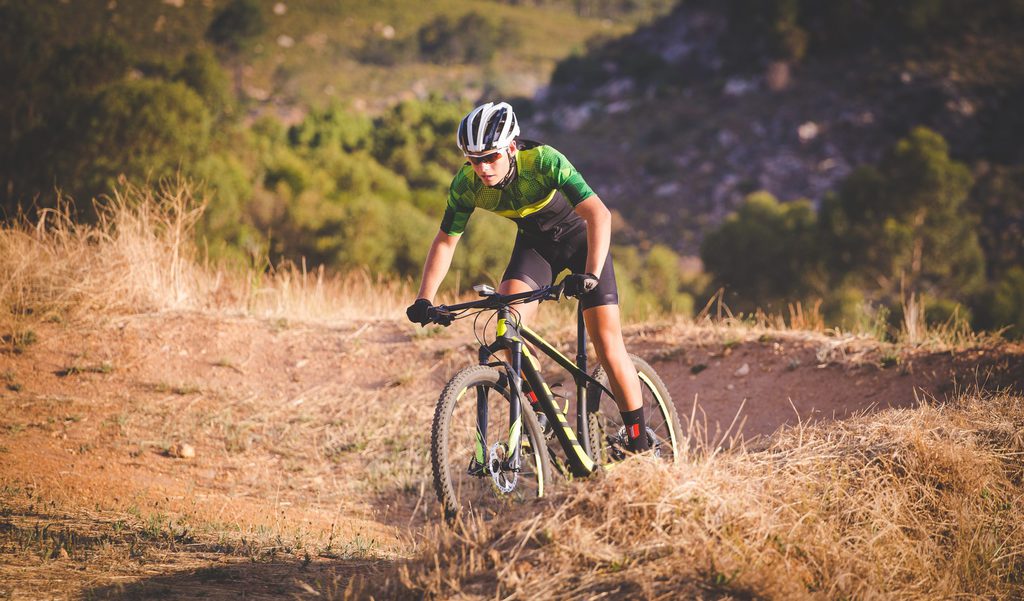
Other than your bike, the number one piece of equipment you need for mountain biking is a helmet. It will protect your noggin in the event of a crash, and spoiler alert, you are going to crash, to get yourself a quality helmet that fits right and feels good to you.
Most helmets give the rider that mushroom look, but you’ll get used to it. You aren’t alone; it comes with the gig.
I’m a big fan of wearing glasses, but I know people that aren’t. I recommend them to help you see better in changing light and to protect your peepers! As you’re hauling down a trail, or following someone else, you’ll brush by branches and get a face full of dirt and other trail debris.
A good pair of full-coverage glasses will become your new best friend. Lenses have come a long way and special ones exist that adjust to the changing light so you always see well and clearly. You’ll come to know the importance of glasses once you ride trails; they’ll become your new best friend and look cool too.
I’m going to let you in on a little secret, gloves aren’t just to improve your grip on the handlebars, you wear them to protect your hands. MTBers sweat, so they need to be lightweight to breathe and have full-length fingers to push off of trees safely or swat away branches.
2. Go Slow
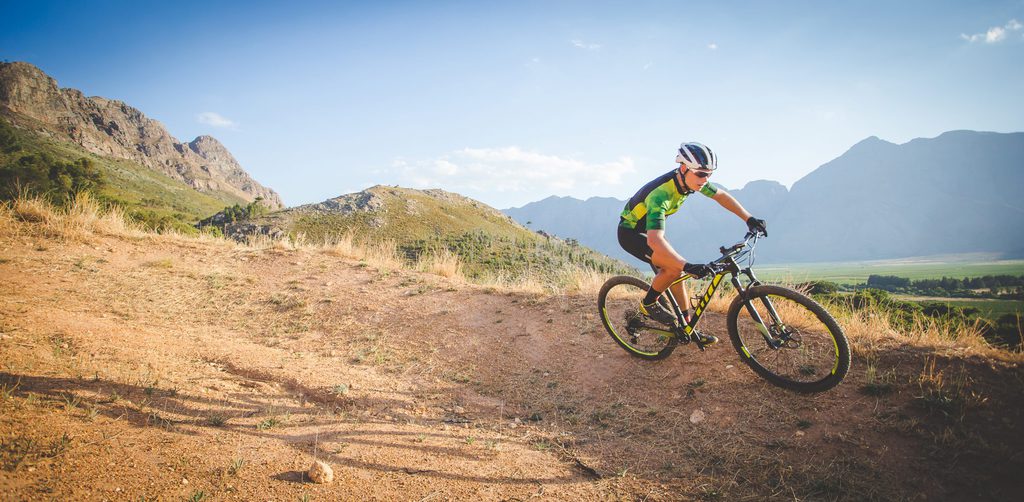
If it’s your first time out on the trails, be conservative and take it slow. You’re learning how you and your bike work together, balance, how it handles, and it’s braking power. If you do other sports already, you’ll pick it up quickly, but don’t bite off more than you can chew in the beginning.
You want the experience to be fun, right?
Big gnarly roots, gullies, rocks, jumps and drop offs may be in the more advanced sections, so be careful as you go and pay attention to trail head signs and warnings.
Working on basic skills right now will benefit you later. You’ll naturally become faster and more confident as you progress. Slow and steady will win the race for now.
3. Ride With A Better Rider
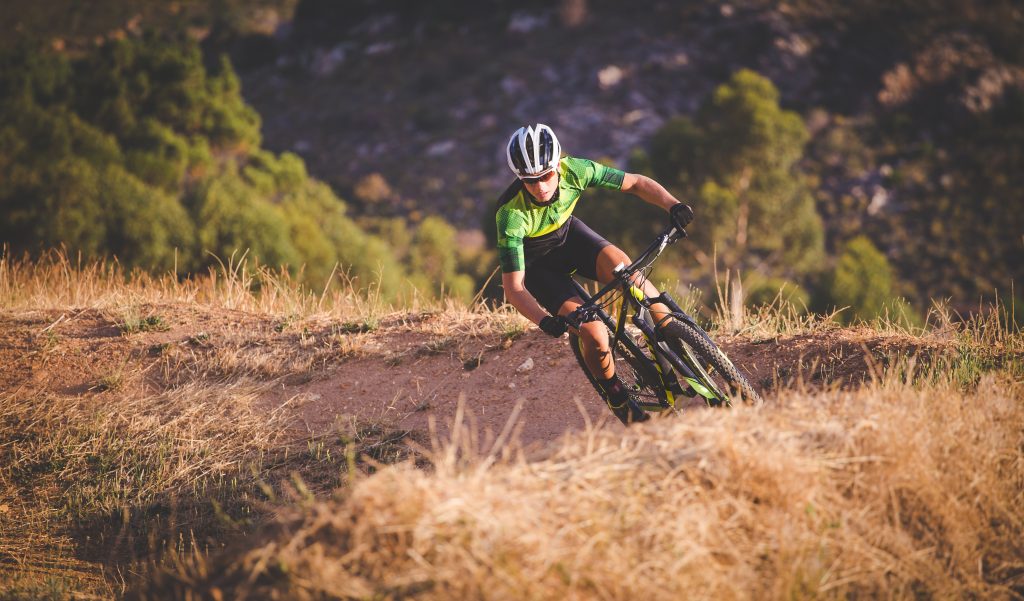
It takes time to learn a new skill. Start watching other riders with more experience. As you become more comfortable, try following them as best as you can. Seasoned MTBers will pick better lines, and you’ll learn a lot from them as your skills develop.
You’ll get to know the hot shot riders in your area fast enough as their abilities will speak for themselves. When you see one, park yourself out of the way next to a section that is causing you difficulties and see how they tackle it. This also applies to corners, berms, and other obstacles.
When you see the same rider repeatedly, try striking up a conversation.
Ask them questions. They’ll probably see it as a compliment, and it may open up other learning opportunities for you.
Offer them a favorite beverage of their choice for their time. You might make a new friend at the same time.
4. Relax and Enjoy the Experience
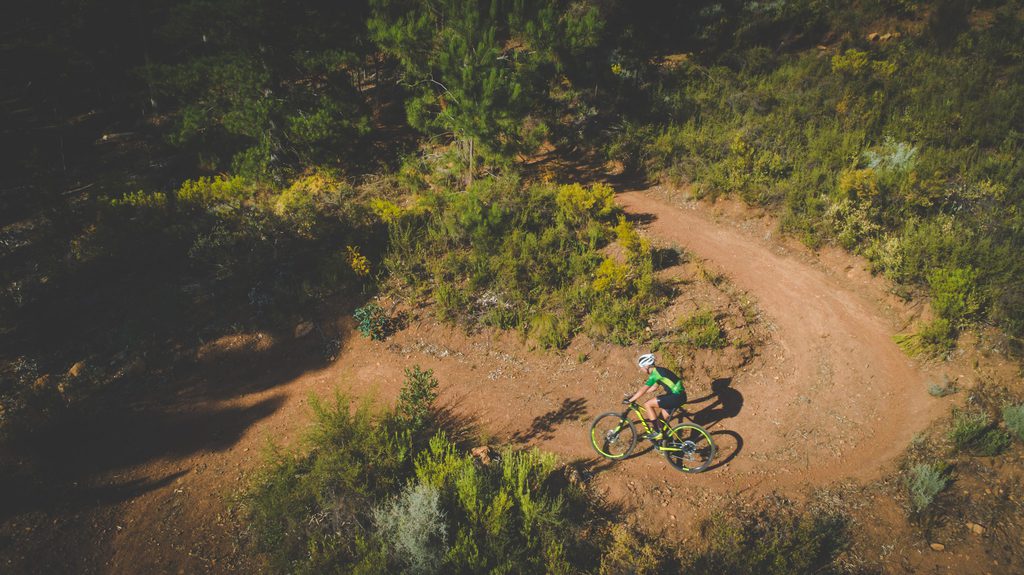
Relax and have a good time. That’s what doing sports and being outdoors is all about, right?
Don’t pressure yourself and expect to be King of the Hill from day one. You’ll learn faster and enjoy the process more if you have a laid-back attitude. Don’t set unrealistic expectations, you may get turned off by the sport totally and you don’t want that.
Keep your body loose. Grip your handlebars firmly, but not too tight either.
Don’t lock out your arms, keep your elbows bent and use them to absorb the changes in terrain. Don’t fight the bicycle, follow the flow, and let it do its job.
5. Make Full Use of the Available Gears
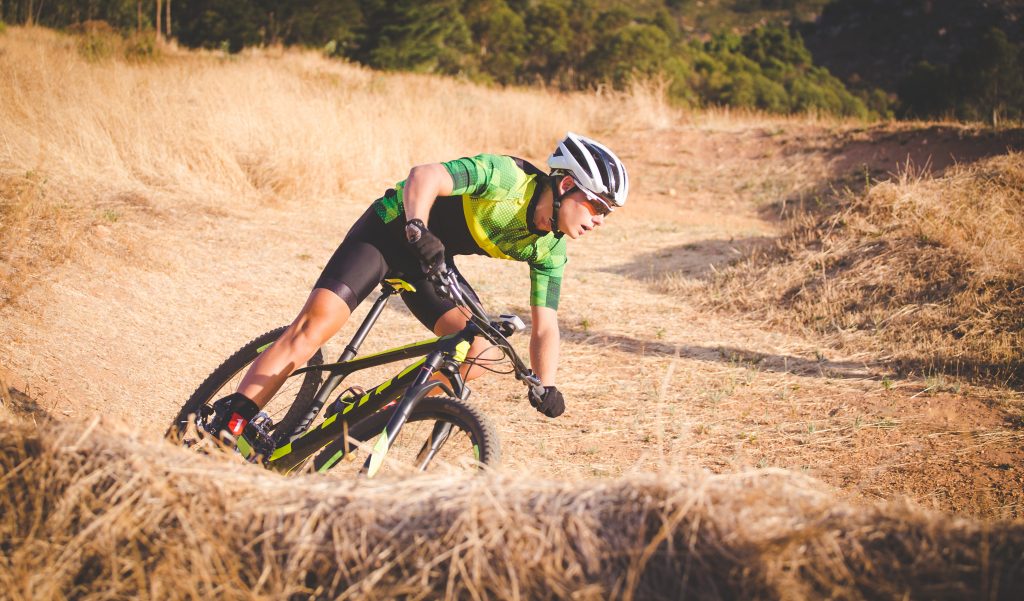
Your MTB has a lot of gears. Learning how and when to use them is an important part of the learning process. You’ll understand high vs low gears as you get to know your bike, the sport, and differences in terrain.
Shift early and often, use all the gears available to you.
Riders have different theories about staying in the saddle or standing up. There is a fine line of efficiency between the two positions. For me, seated is best for climbing with a cadence of 90 rpm or above.
Get out of the saddle when it drops below 80 rpm. You’ll be working harder, yes, but as efficiently as when in the saddle at a higher cadence.
6. Use Gravity and Momentum
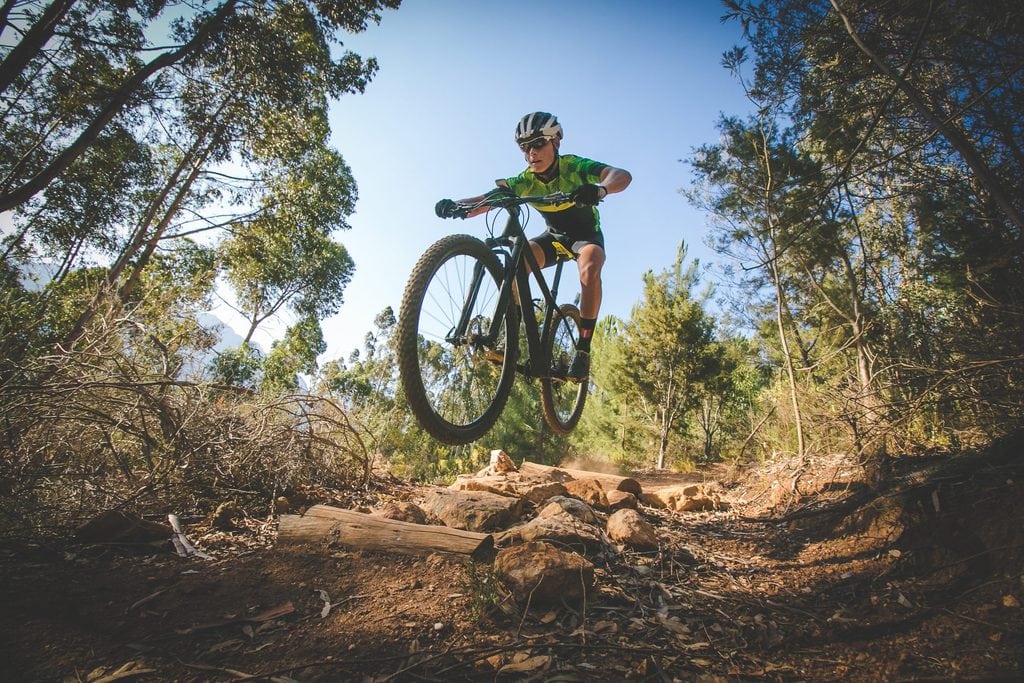
Traveling at high speeds over rough terrain can be intimidating. Don’t fall into the habit of braking unnecessarily. Learn to trust your bike, the tires, and yourself by using momentum on descents. Once you get used to it, you’ll feel like a kid again riding a roller coaster, just keep your hands on the bars.
When you have to brake, learn to modulate how much to pull on the levers. MTB brakes are powerful, if you pull them 100% and your weight isn’t toward the rear of the bike, you’ll come to a complete halt and be flown off of the front of the bike.
Most MTBers use the rear brake with more frequency. Your weight is over the rear wheel which makes the bike easier to control. I almost never use the front brake only, but in combination with the rear when I need more power and want to stop quickly. It’s important to keep a good balance between the two.
Don’t brake in a turn, do it before.
7. Set Up the Suspension Correctly
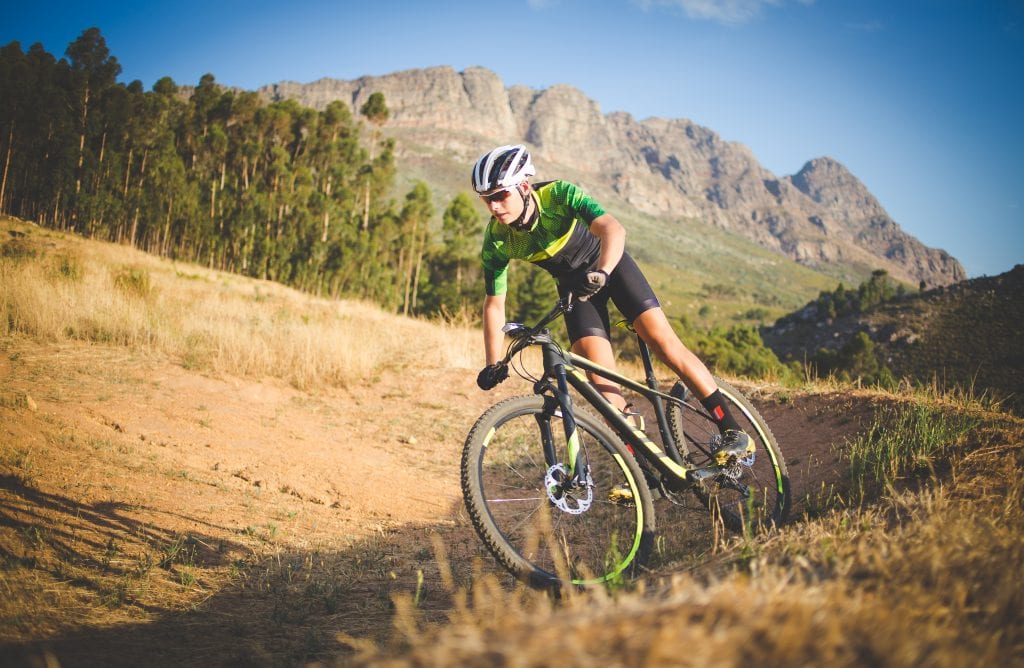
Suspension helps improve traction, comfort and control.
Hardtail MTBs have front suspension only while full-suspension is as it sounds, both the front and rear are equipped with suspension devices. Either system needs to be set up properly for your weight to be effective. But how do you do that?
Front and rear suspension devices come equipped with lock-out switches, meaning you can choose if they are active or not.
Non-active, or locked out, is best for climbing since more of your power goes into moving the bike forward instead of it bobbing up and down.
Switch it to active when not climbing to benefit the most from the suspension.
Read More : What are the Differences between a Hardtail and Full-sus MTB?
8. Look Where You're Going
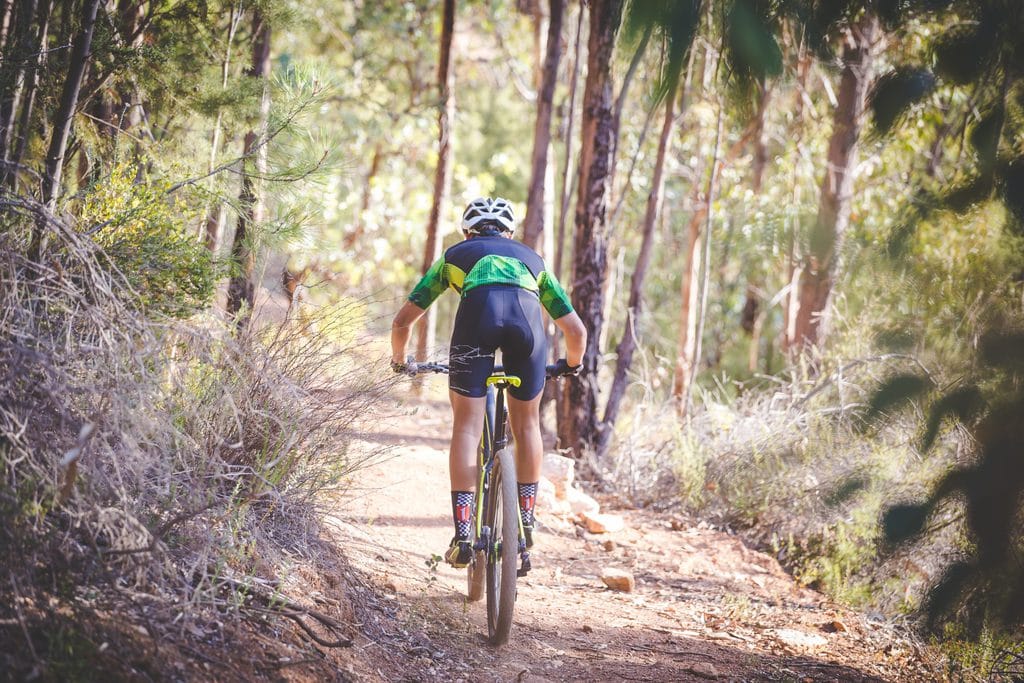
While it sounds easy, looking where you are going instead of at the ground isn’t obvious. Those deep gullies and roots seem to have a tractor beam pulling you in.
If you’re looking up and picking out your line ahead of you instead of immediately at the ground, you’ll break out of the beam.
Keeping your head up helps with breathing too.
You’re going to fall, it’s a fact, so when you do, try not to stick your hand out to break your fall.
It’s a reflex, I know, but do your best to avoid it. The force will travel through your hand and wrist, up your arm, and the brunt of the blow will land on your collarbone, most likely breaking it. Tuck and roll or try these methods instead.
Author Recommended Reads
